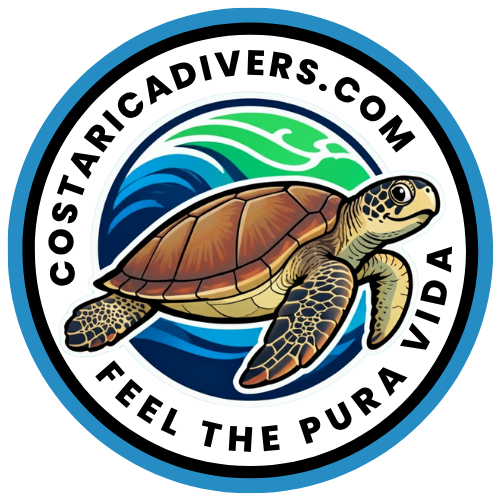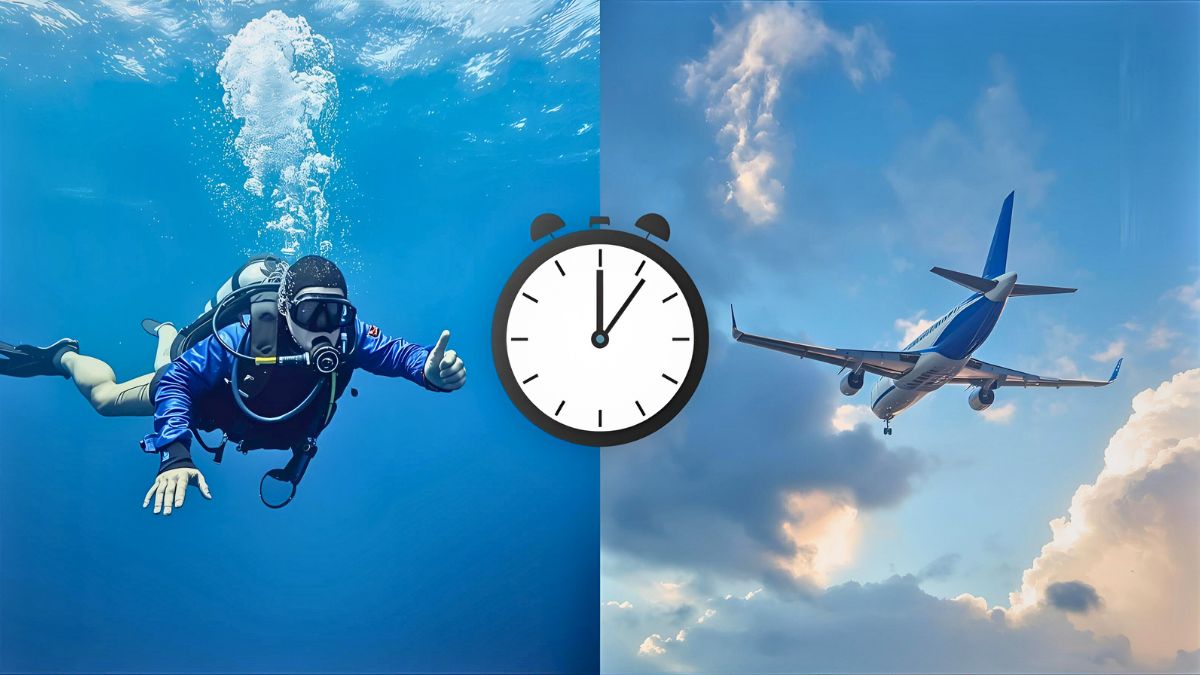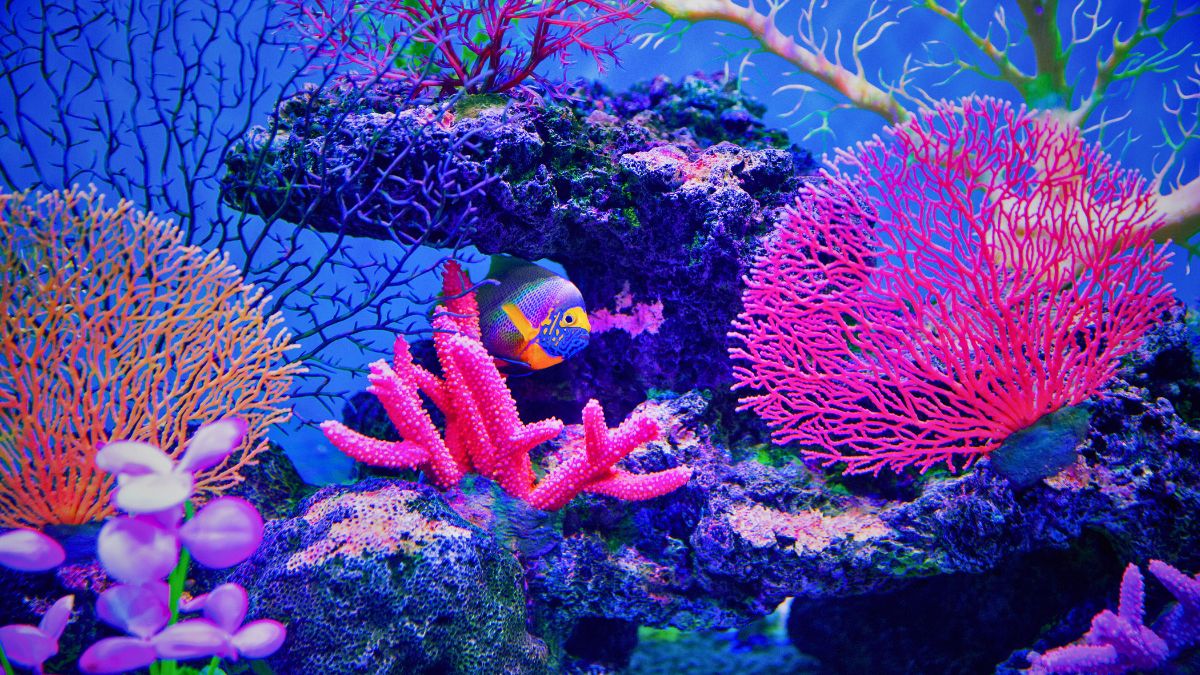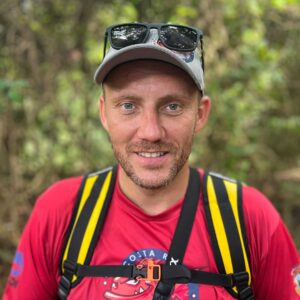Costa Rica is a magical destination for families seeking adventure, wildlife, and pristine natural beauty. But here’s something many parents don’t realize: it’s also one of the best places in the world to introduce your kids to the underwater world through scuba diving.
Scuba diving for kids in Costa Rica isn’t just about the thrill of breathing underwater. It’s about watching your child’s eyes light up when a sea turtle glides past. It’s about building confidence, teaching responsibility, and creating family memories that last forever.
In this complete guide, I’ll walk you through everything you need to know about scuba diving for kids in Costa Rica. You’ll learn about age requirements, safety considerations, the best diving locations, and how to choose the right program for your child.
Why Is Costa Rica Perfect for Scuba Diving with Kids?
Costa Rica has earned its reputation as a premier family diving destination. The combination of ideal conditions, abundant marine life, and family-focused dive centers makes it the perfect place for young divers to start their underwater journey.
Are Costa Rica’s Waters Safe for Young Divers?
For beginner divers, especially kids, calm and warm waters aren’t just nice to have, they’re essential for a positive first experience.
Costa Rica delivers exactly that. The waters around Uvita and Isla del Cano are known for their gentle conditions. Water temperatures hover between 80-85°F year-round, which means kids stay comfortable without getting cold.
Scuba Diving for Kids in Costa Rica
Visibility in these areas regularly reaches 60-90 feet on good days. Clear water helps young divers feel more at ease because they can see everything around them. No murky mystery, no anxiety about what’s lurking nearby.
The ocean conditions in the South Pacific region are naturally calmer than other parts of Costa Rica. Protected bays and gentle currents create an environment where kids can focus on learning rather than fighting against the water.

What Marine Life Will My Kids See Underwater?
The waters around Costa Rica are teeming with marine life that captures young imaginations. Colorful tropical fish dart through coral formations. Gentle sea turtles glide past, often close enough to observe. Playful dolphins sometimes accompany our boats. Rays gracefully cruise over sandy bottoms.
One parent described their child’s first dive like this: “It’s like swimming inside an aquarium, except everything is real and alive and moving all around you.”
The marine species in our waters are generally non-threatening, which helps nervous parents relax. Yes, we occasionally see reef sharks, but the whitetip reef sharks common in our area are docile and uninterested in humans.
Did you know? The water temperature in Costa Rica’s South Pacific stays warm enough year-round that kids can dive comfortably in just a 3mm wetsuit. In many diving destinations, children need thicker, heavier wetsuits that can be uncomfortable and restrictive.
Why Choose a PADI 5 Star Dive Center?
Not all dive centers are created equal, especially when it comes to working with children.
Our PADI 5 Star Dive Center specializes in family diving experiences. The 5 Star rating represents the highest level of PADI dive center certification, which means we meet strict standards for instructor quality, equipment maintenance, safety protocols, and customer service.
We maintain small group sizes, typically limiting junior diver groups to 2-4 students per instructor. Our instructors aren’t just certified to teach diving, they’re experienced working with children, which requires different skills than teaching adults.
Equipment matters tremendously for kids. We maintain a full range of youth-sized masks, fins, wetsuits, and BCDs specifically designed for smaller bodies. Properly fitted equipment helps kids feel comfortable and safe.
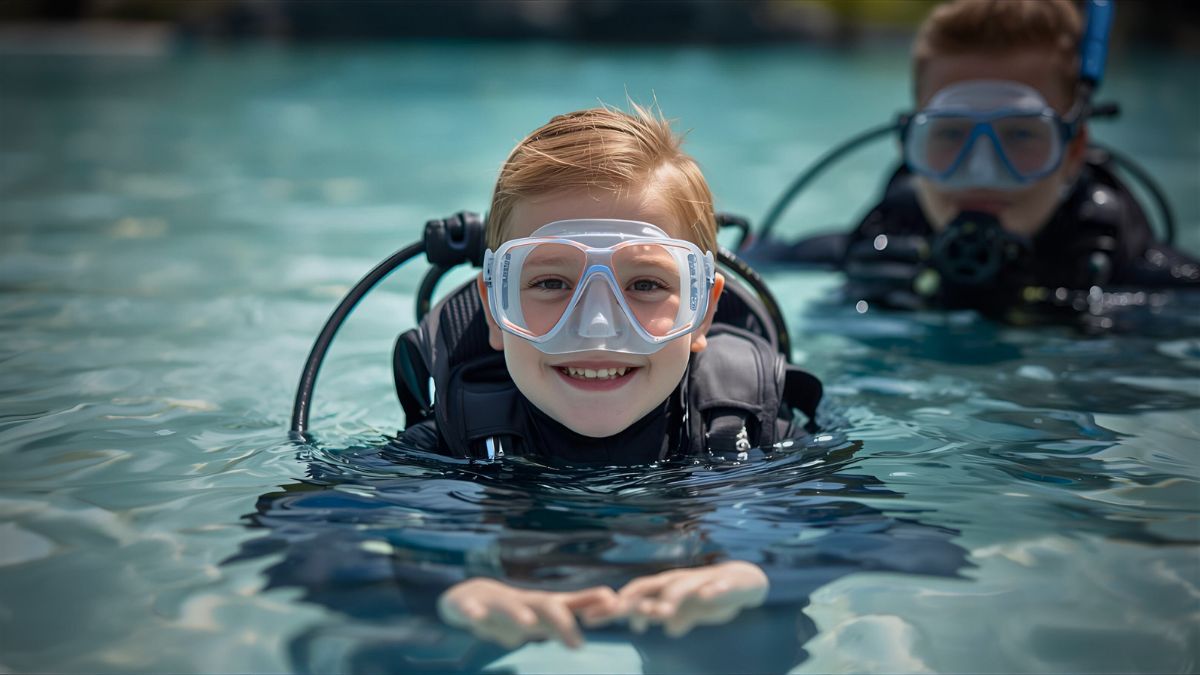
What Is the Minimum Age for Scuba Diving for Kids in Costa Rica?
One of the most common questions parents ask is: “How old does my child need to be?” The answer depends on what type of diving experience you’re looking for.
Can My 8 or 9-Year-Old Try Scuba Diving?
Yes! Kids as young as 8 can experience scuba diving through the PADI Bubblemaker program.
Bubblemaker is specifically designed for children ages 8 and 9 who want to try diving in a safe, controlled environment. The entire experience takes place in a swimming pool with a maximum depth of just 6 feet (2 meters).
This isn’t a certification course. There are no tests, no classroom sessions, no pressure. It’s simply a fun introduction to breathing underwater using real scuba equipment.
The session typically lasts about 2 hours and costs around $65-85. Many families use Bubblemaker as a “test drive” before committing to full certification.
When Can Kids Get Certified to Scuba Dive?
Full scuba certification begins at age 10 through the Junior Open Water Diver course.
This is the real deal. Your child will complete the same comprehensive training that adults take, just with age-appropriate depth and supervision restrictions. The course covers dive theory, confined water skills in a pool, and four open water training dives.
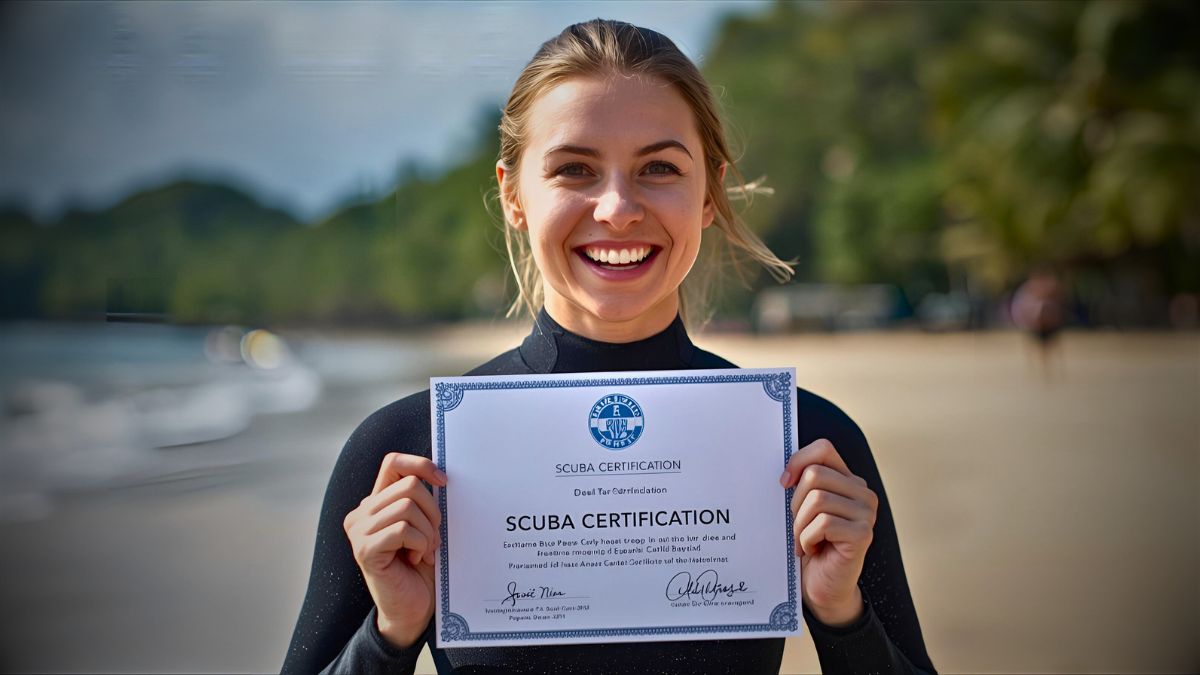
What Are the Age Restrictions for Junior Divers?
Important restrictions for 10 and 11-year-olds:
- Maximum depth is 40 feet (12 meters)
- Must dive with a parent, legal guardian, or PADI Professional
- Cannot dive with just siblings or family friends
At age 12, your child’s diving world expands. The depth limit increases to 60 feet, and they can dive with any certified adult. They also become eligible for Junior Advanced Open Water certification.
At age 15, all junior restrictions automatically disappear. The certification becomes a full Open Water Diver credential with no additional testing required.
Fun fact: Many dive instructors started their diving journey as junior divers. Kids who get certified young often develop such a passion for the underwater world that it shapes their career choices later in life.
Is Scuba Diving Safe for Kids?
Every parent worries about safety when considering scuba diving for their child. That’s not just normal, it’s good parenting. So let’s talk honestly about safety, risks, and what we do to keep young divers protected.
What Safety Measures Protect Young Divers?
Safety in scuba diving for kids in Costa Rica starts with following PADI’s internationally recognized standards.
Our instructors hold current PADI certifications and maintain professional liability insurance. More importantly, our team has specific training and experience working with children. We only assign instructors who genuinely enjoy working with young people and know how to make them feel safe.
Is diving for children in Costa Rica a good idea?
Youth-sized equipment isn’t optional, it’s essential for safety. We maintain proper youth equipment in multiple sizes to ensure every child has gear that works correctly for their body.
Instructor-to-student ratios for kids are more conservative than adult ratios. We limit junior diver groups to 2-4 students depending on age and experience.
Medical screening happens before any course begins. Certain conditions like severe asthma, heart problems, or seizure disorders may prevent diving.
What Are the Real Risks I Should Know About?
I won’t sugarcoat this. Diving carries some inherent risks, and you deserve to know what they are.
The most common issues are minor and easily managed. Ear discomfort from improper equalization affects some new divers. Some children experience temporary anxiety about being underwater. Minor scrapes from coral or rocks can happen if divers aren’t careful.
Serious diving accidents are rare, especially among properly supervised junior divers who follow age restrictions and depth limits.
Here’s important perspective: diving has a lower injury rate than many popular youth sports like football, soccer, or skateboarding. The risk is manageable and comparable to activities most parents already allow their kids to do.
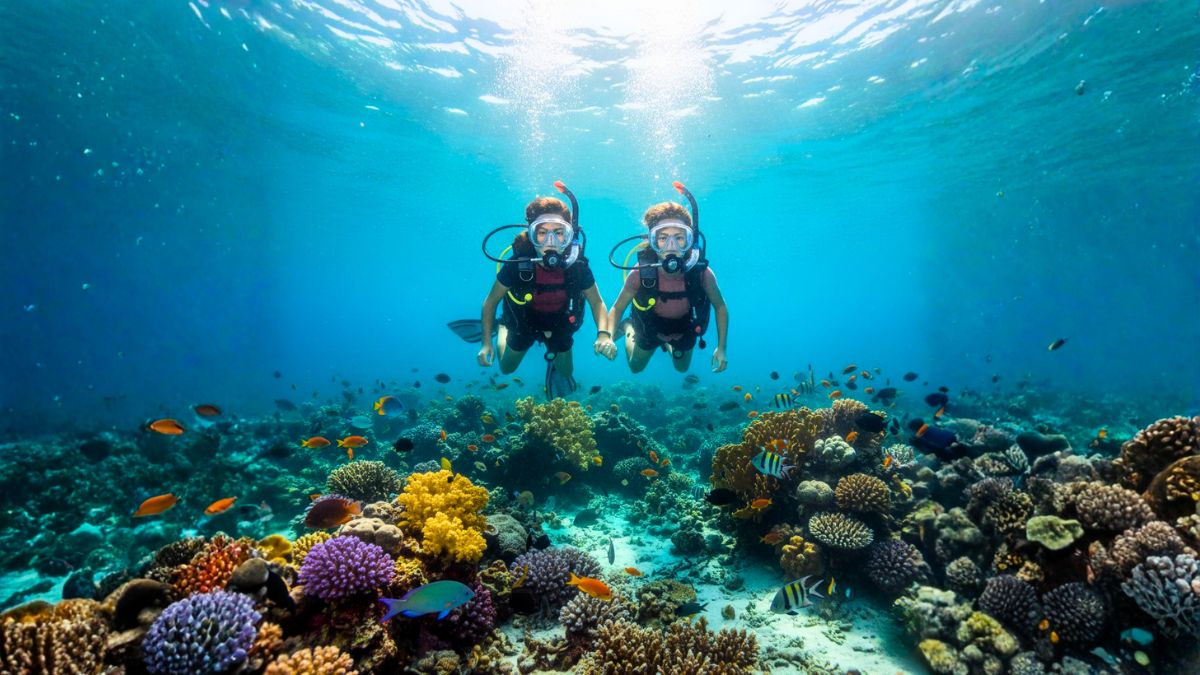
How Do I Know If My Child Is Ready for Scuba Diving?
Meeting the minimum age requirement is just the starting point. You need to assess whether your specific child is truly ready for diving.
Physical Readiness Checklist
Swimming ability is non-negotiable. Your child needs to be a confident, comfortable swimmer. Most courses require students to swim 200 meters continuously and tread water for 10 minutes.
Physical strength matters less than you might think. In the water, everything becomes nearly weightless due to buoyancy. What matters is that your child can handle the equipment getting in and out of the water.
Ear equalization capability is crucial. Most kids can do this easily, but some have difficulty. If your child frequently has ear infections or struggles with pressure changes on airplanes, discuss this with us before enrolling.
Mental and Emotional Readiness
Can your child follow multi-step instructions? Diving requires remembering procedures, following safety protocols, and executing skills in sequence.
How do they handle new or stressful situations? Kids who adapt well to new experiences and don’t panic when things feel unfamiliar tend to do better.
Is the interest genuine or parent-driven? Your child should actively want to dive, not just agree to make you happy.
After working with hundreds of young divers, I can tell you this: maturity matters more than age. You know your child best. Trust your instincts.
Where Are the Best Scuba Diving Locations for Kids in Costa Rica?
Costa Rica offers numerous diving sites, but some locations are particularly well-suited for young divers and families.

Why Is Isla del Cano Perfect for Young Divers?
Isla del Cano, located off the southern Pacific coast, is often considered one of the top diving spots in Costa Rica, and it’s especially great for kids.
The biological reserve status means the marine environment is protected and pristine. Visibility regularly reaches 60-90 feet. This crystal-clear water helps young divers feel comfortable.
The marine life diversity is exceptional. Kids diving at Isla del Caño commonly encounter sea turtles, rays, reef sharks, massive schools of tropical fish, and occasionally dolphins or humpback whales in season.
Current conditions are generally gentle, making it suitable for beginner and junior divers. Our dive trips to Isla del Caño are specifically tailored for families.
What Makes Uvita Ideal for Family Diving?
Uvita serves as the perfect home base for families interested in scuba diving for kids in Costa Rica.
The dive sites near Uvita are easily accessible, with most locations just 20-40 minutes by boat. This means less travel time and more diving time, important when working with kids.
Marino Ballena National Park, home to the famous Whale’s Tail formation, offers protected reefs and gentle conditions. The shallow reefs here are perfect for introductory dives and Junior Open Water training dives.
Did you know? Marino Ballena National Park was created specifically to protect the area’s humpback whales and marine life. Diving in the park directly supports conservation efforts through park fees that fund protection programs.
What Should I Expect on a Family Scuba Diving Trip?
Understanding what actually happens during a family diving experience helps set realistic expectations and reduces anxiety for both parents and kids.
How Do We Prepare Before the Dive?
For certification courses, your child will complete the theory portion either through PADI eLearning (online) or in-classroom sessions. The eLearning option is popular because kids can complete it at home before vacation.
Before the first pool or ocean session, we conduct a detailed orientation. Parents are welcome and encouraged to attend. We’ll show kids the equipment, explain how everything works, and answer questions.
Kids learn the basic hand signals they’ll use underwater to communicate. These are simple and intuitive, thumbs up means “go up,” making an “OK” sign means “I’m okay.”
What Happens During the Actual Dive?
For ocean dives, you’ll board our dive boat in Uvita. The boat ride takes 20-60 minutes depending on the destination. We provide snacks and drinks during the journey.
Entry into the water is carefully managed. The instructor is right beside the young diver, maintaining physical contact if needed. We descend slowly, stopping frequently to ensure kids are equalizing their ears properly.
Once at depth, the dive becomes exploratory and fun. The instructor guides the group, pointing out marine life. Kids explore at their own pace within the group structure.
Dives for junior divers are typically shorter than adult dives, usually 30-40 minutes. Back on the boat, there’s time between dives for rest, snacks, and excited chatter.

Scuba diving for Kids in Costa Rica
Most kids come out of the water bursting with excitement. They want to tell you about every fish they saw, the turtle that swam close by, the sensation of weightlessness.
Many parents report that their kids ask “When can we go again?” before they’ve even taken off their wetsuits.
Some kids initially express nervousness, but after completing their first dive successfully, their confidence soars. They’ve proven to themselves they can handle something challenging and unusual.
How Much Does Scuba Diving for Kids Cost in Costa Rica?
Understanding the financial investment helps families plan and budget for diving experiences.
What Are the Program Costs?
Different programs come with different price points:
PADI Bubblemaker (ages 8-9): $65-85 per child
- Includes all equipment, instruction, pool time, certificate
Discover Scuba Diving (ages 10+): $120-150 per person
- Includes pool session and one or two shallow ocean dives
Junior Open Water Diver Certification (ages 10+): $400-550 per person
- Includes all instruction, equipment rental, four open water dives, certification processing
The certification cost provides a lifetime credential, professional instruction over multiple days, and a skill your child will have forever.
What Questions Should I Ask Before Booking?
- What are the instructor-to-student ratios for junior divers?
- Do you have youth-sized equipment in multiple sizes?
- What happens if my child feels uncomfortable during training?
- Can parents be present during pool sessions?
- What’s your refund or rescheduling policy?
- How many days will certification take?
- What’s included in the course price?
Did you know? Studies show that children who participate in adventure activities like diving demonstrate higher levels of self-efficacy and problem-solving skills compared to peers who don’t engage in similar challenges.
Ready for Scuba Diving with Kids in Costa Rica?
Scuba diving for kids in Costa Rica offers an incredible opportunity to create lasting memories, build confidence, and introduce your children to the wonders of the underwater world.
The combination of warm, clear waters, abundant marine life, and family-focused dive centers makes Costa Rica one of the best places for scuba diving in the world for young divers.
These are the moments that define family vacations. These are the experiences your children will remember and talk about for years.
Frequently Asked Questions
Can My Child Dive If They Wear Glasses?
Yes. Prescription masks are available that incorporate vision correction. Alternatively, some kids wear contact lenses while diving. Discuss this with your instructor.
What Happens If My Child Panics Underwater?
Instructors are trained to handle panic situations. They maintain close physical proximity and can provide immediate reassurance or calmly guide kids to the surface if needed.
Can Siblings with Different Ages Dive Together?
It depends on ages and certifications. A certified 12-year-old and 15-year-old can dive together with adult supervision. However, a 10-year-old must dive with a parent or PADI Professional.
How Long Does Junior Open Water Certification Last?
Forever. Scuba certifications don’t expire. Once your child is certified, that credential is valid for life.
Can My Child Dive Right After Flying to Costa Rica?
Yes. The rule about not flying after diving doesn’t apply in reverse. You can dive immediately after flying, which is ideal for vacation planning.
Sources and References
This article is based on verified information from the following sources:
- PADI – Professional Association of Diving Instructors, certification standards and procedures
- DAN (Divers Alert Network) – Diving safety research and medical information
- Costa Rica Tourism Board (ICT) – Marine protected areas and biodiversity information
- Years of hands-on experience training families and young divers in Costa Rica’s waters
